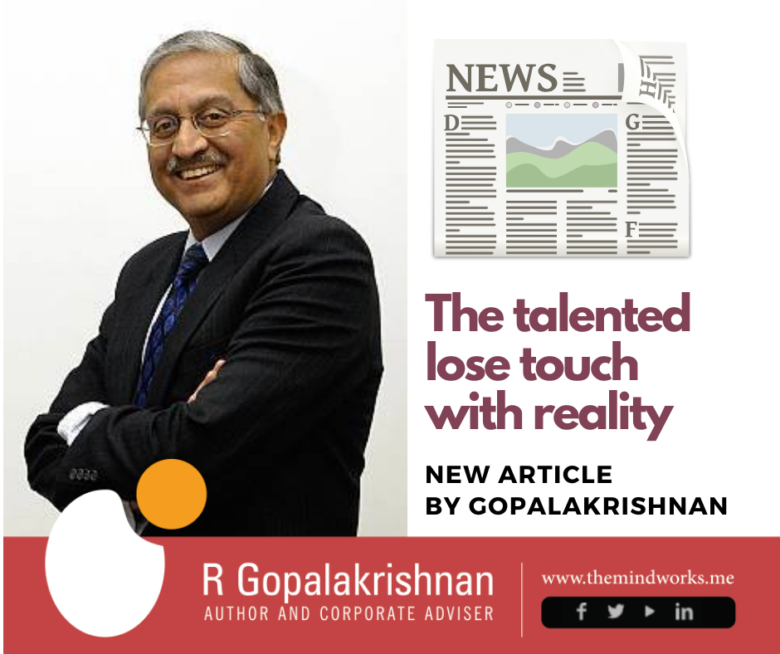20th February 2014, BUSINESS STANDARD
The impact of an innovation on human lives is more important than the ‘first’ person who came up with the idea
The human species evolved from mammals. By learning to walk on two legs, mammals dramatically increased blood supply to the brain and our distinctive human neo-cortex evolved. Similarly, most ideas evolved over long periods.
Who knows whose the original idea was or even which the original idea was? The undisputed original thinker was Adam in the Garden of Eden. Since Adam, everyone has built on others’ ideas. Innovation, recognised as such, appears periodically when it is perceived as a novel, problem-solving version – even if a rearrangement, combination, breakdown or mutation of existing ideas. The distinctive packaging and delivery of the problem-solution is innovation, almost surely a build-up from a bunch of earlier ideas.
That is why, in judging innovation and innovativeness, the impact on human lives can be thought of as being more relevant and important than the person who thought of the idea or even the idea per se.
However, everyone is obsessed with the first person who got a particular idea. Who has the patent? Who made a million or billion out of the idea? What do we know about that person? Books and articles love to focus on the lone creative mind, and that person then becomes the hero: how Thomas Edison invented the electric bulb or Willis Carrier invented the air-conditioner, or how Vic Mills invented the disposable diaper. Writers on innovation parse the person and dramatise the circumstances under which his or her mental light bulb flashed. Like success has many fathers, well-known innovations, too, have many fathers.
Consider, for example, the idea of improving the conditions of comfort around you. Who thought of it and when?
It has been an evolutionary process over centuries. Humans have long tried to improve the conditions that they encountered naturally. In ancient Rome, the wealthy used an aqueduct system to circulate cool water through pipes embedded in their walls. In the third century, Roman emperor Elagabalus despatched one thousand slaves to the mountains to fetch snow to cool his gardens. The hand fan has been in use for centuries, as early as 3,000 BC in China. Electric fans appeared in America only in the 20th century. In 1758, Benjamin Franklin and John Hadley discovered that the evaporation of certain liquids such as alcohol produce a cooling effect. Fifty years later, Michael Faraday found that liquefying ammonia could chill the air. In 1830, John Gorrie patented an ice-making machine over which he blew air to cool the air. All of these, and perhaps more, were Neanderthal versions of the idea of influencing the comfort of the natural weather.
In the early 1900s, a publisher in Brooklyn called Sackett Wilhelms Lithographing and Publishing Comapny faced a scheduling problem. The company was printing a magazine and had to pass the paper through the printer repeatedly, once for every colour. If the weather was humid, the ink from the previous pass would not dry on time, thus delaying the next pass of the paper. This affected schedules and deadlines. The company referred the problem to the Buffalo Forge Company.
The founder of the Buffalo Forge Company, William Wendt, had just caved in to the demands by a young and restless Willis Haviland Carrier, to create a laboratory to tackle somewhat speculative projects, like dehumidifying air. A young Cornell University Masters in Engineering, Willis had joined Buffalo Forge in 1901 at the age of 25. As he thought about the air one foggy morning on a Pittsburgh train platform, he realised that he could influence the moisture in the air by passing dry air through water to create a mist. He was all set for the serendipity required to solve the problem posed by the Sackett Company.
This laboratory was the perfect location, and Willis was the perfect person, to whom this problem could be referred. The young team adopted a couple of approaches but those failed. Willis used his instinct to devise an alternate solution. In the process, he invented modern air-conditioning. On July 17, 1902, his new fangled humidity-controlling machine started operating. The young innovator patented his invention and went on to create the Carrier Corporation.
The story about electric bulbs, believe it or not, bears some similarities. Historians Robert Friedel and Paul Israel have compiled the names of 22 people who invented the electric bulb before Edison even filed his patent for his product (Edison’s Electric Light, Rutgers University Press, 1986). One of these 22 was one John W Starr, who got his patent in 1845, long before Edison. According to another book by Andrew Haragadon, How Breakthroughs Happen, Edison’s first patent application was rejected because it infringed Starr’s patented design.
If you were to write the biography of the idea of influencing weather conditions or the idea of electric lighting, when would you say the idea was born, whose neurons were responsible for the invention and who is the real father of the innovation? Like much of history, it depends on who writes it.
Every innovation seems to be merely an evolutionary punctuation mark – each with a past and a future.
If society was to be obsessed more with the number of people benefitted by the innovation rather than who the original inventor was, there could be an explosion in the innovative output all around.

